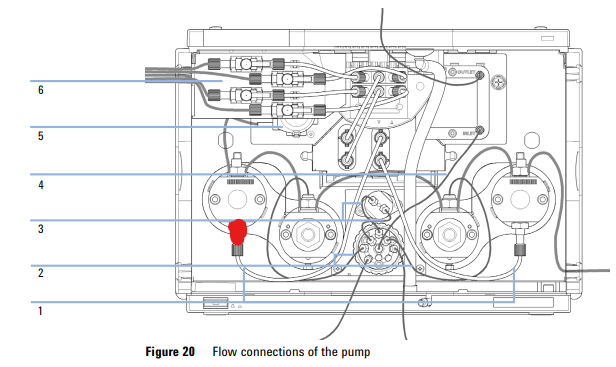Hello, I am troubleshooting a leak in the primary pump head of an Agilent 1290 G4220A binary pump. I am visibly observing that when the pump is operating, mobile phase is leaking into the seal wash lines. Also, by looking at the detector signals, I can see that the seal wash liquid is leaking into the mobile phase. The Pump Leak Rate Test also fails -- the secondary piston test passes, but the primary piston can't come up to pressure, so the test aborts at that point.
I have replaced the Wash Seal (part # 0905-1175) with a brand new seal, but the problem is still persisting.
Would it be possible to get advice on what parts we should focus on replacing next? Would our symptoms mean the entire seal holder has failed (G4220-60616), or could there be other parts like the piston seal (0905-1719) or other consumable parts that could also cause the leaks we are observing between the mobile phase and seal wash fluids?



